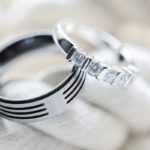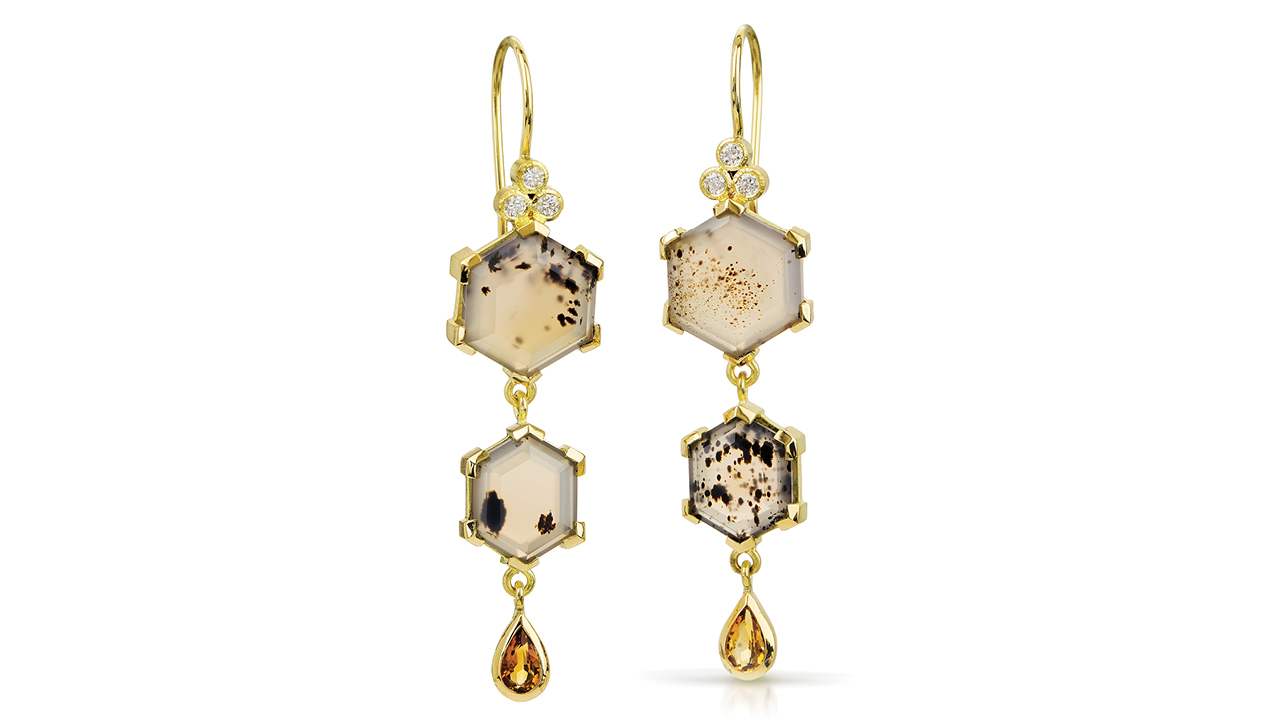When Bob Goodman walks the aisles of certain trade shows, he’s troubled by what he perceives as some less-than-truthful proclamations. “I see ‘sustainable jewelry’ everywhere, but when I ask the vendor what’s sustainable about their product, I realize that most of the claims are greenwashing,” says the co-owner of Robert Goodman Jewelers in Zionsville, Indiana.
Many next-generation clients seek out his store because of his devotion to stocking jewelry from designers that share their values; his website has a “Sustainable Jewelers” section that lists makers like Fana and Karin Jacobson Design. Other shoppers are drawn to his personal views: Signage online reveals his store to be a gun-free space that supports Black Lives Matter, the LGBTQ community, and various local causes. For Goodman, all of these elements are part of the “human model” that he and his wife Rose Marie baked into the business at its inception in 2000.
“We’ve decided to occupy a space of transparency, traceability and ethics, which all fall under social justice,” he says. “For the client who doesn’t care, we’ll just talk about the designs. We create benefit no matter what.”
RELATED READING

The value of rigor
The transparency angle is an important one for jewelers to take. Store owners must be willing to talk about tough topics like the exact makeup and origins of recycled metals, the sources of the gemstones they use, and what they’re doing to get accurate information from suppliers.
The experts’ advice? Don’t just use the trendy terms to make a sale; do your due diligence and be prepared to walk away from vendors who can’t provide a paper trail. Don’t apply a term to a product if you don’t know the exact composition. And if a product is only partially sustainable, make sure to qualify any responsible-sourcing claims you make about it.
“If a jeweler stated that they were using ‘recycled’ gold, but it only accounted for 10% of the gold they used, that claim could be deceptive to a consumer without identifying the percentage,” explains Sara Yood, deputy general counsel of the Jewelers Vigilance Committee (JVC), which provides legal guidance to the jewelry industry.
Goodman investigates every claim and sometimes has to admit to clients that he only knows what he’s been told. His honesty has earned him praise from customers, he confesses.
One useful tactic is to show sustainable jewelry lines and use that to start a conversation on the subject. “This is a way to walk the talk without interfering with sales,” says Susan Wheeler, founder of Susan Wheeler Design and the Chicago Responsible Jewelry Conference.
The bigger picture
Simply pointing to cases of recycled gold and conflict-free gems, however, is not enough. “The knowledge that retailers need to have ready is not just the marketing that we receive from mining companies,” Wheeler says; to give real answers, store owners need to be aware of “the problems that we create in our supply chain.”
Telling someone, ‘This is Fairmined gold,’ and not following up about why that matters is a missed opportunity.
Consultant Christina Miller of the eponymous firm agrees. “Telling someone, ‘This is Fairmined gold,’ and not following up about why that matters is a missed opportunity to tell customers that their choices can have an impact,” she says.
It’s also important to be crystal-clear with language. Terms like “sustainability” can have an environmental meaning to some, but you can offer a more comprehensive view “by highlighting the economic and cultural sustainability impacts of jewelry materials as well,” Miller points out. “When it comes to social or human-rights issues, most consumers continue to be concerned with ‘blood diamonds’ but don’t yet have awareness that other jewelry materials — gold especially — are fueling issues just as grievous.”
Honesty is the best policy
Explaining your goals and the actions your store is taking to combat negative effects can go a long way, says Andrew Cooper of Andrew Cooper Consulting, who recommends using layman’s terms to do so.
“Transparency about progress, even if goals are not fully achieved yet, builds trust,” he elaborates. A retailer’s toolbox could include a sustainability section online, a policy on responsible business practices, and an annual sustainability report that customers can read.
“Be prepared to share detailed information about how you substantiate claims,” he adds. And if you don’t have an answer, just say so. It’s okay to admit that you’re working toward a better jewelry industry. Most customers just want assurance that their purchases are not harming others or the environment.
“Each person has their own balance of values,” says Wheeler. “The truth will always be appreciated.”
Main image: Earrings by Karin Jacobson in Fairmined 18-karat gold with post-consumer recycled diamonds from Hoover and Strong, and Montana agate and Brazilian citrine from Columbia Gem House. (Cole Rodger)
This article is from GIA’s Spotlight on Sustainability special report. View other articles here.
Stay up to date by signing up for our diamond and jewelry industry news and analysis.

